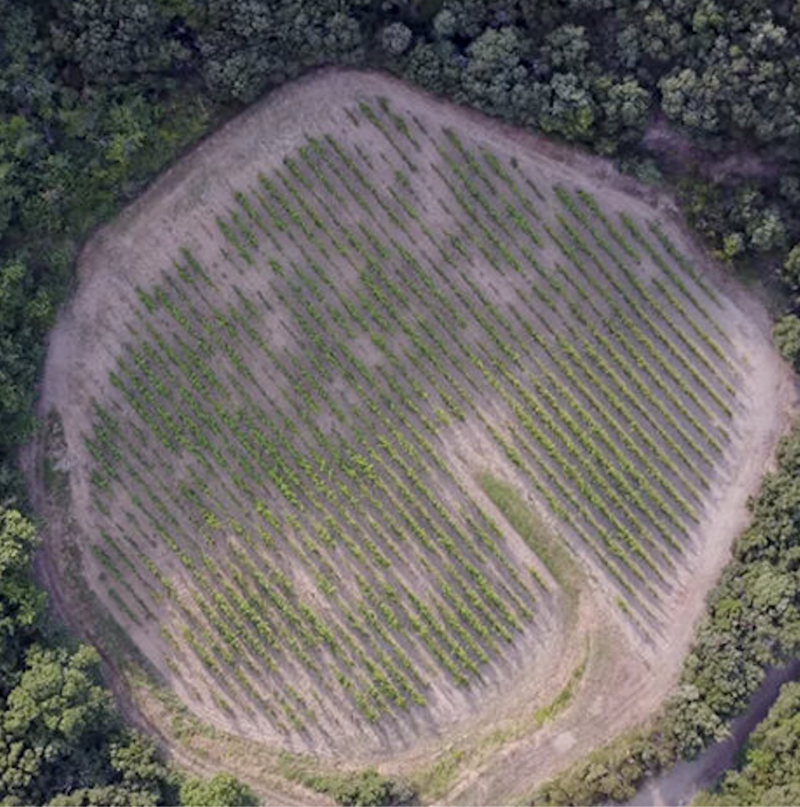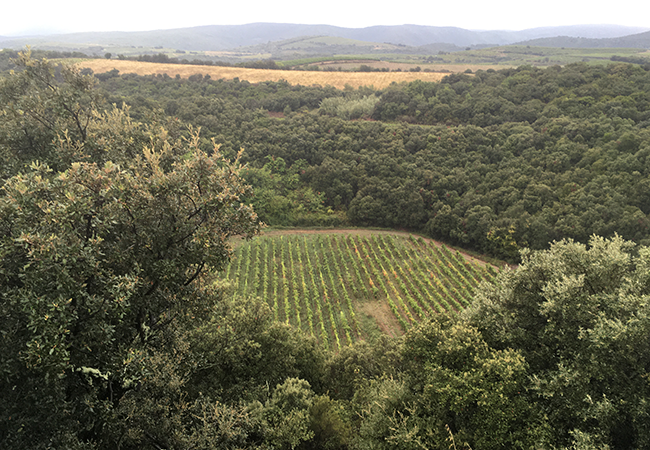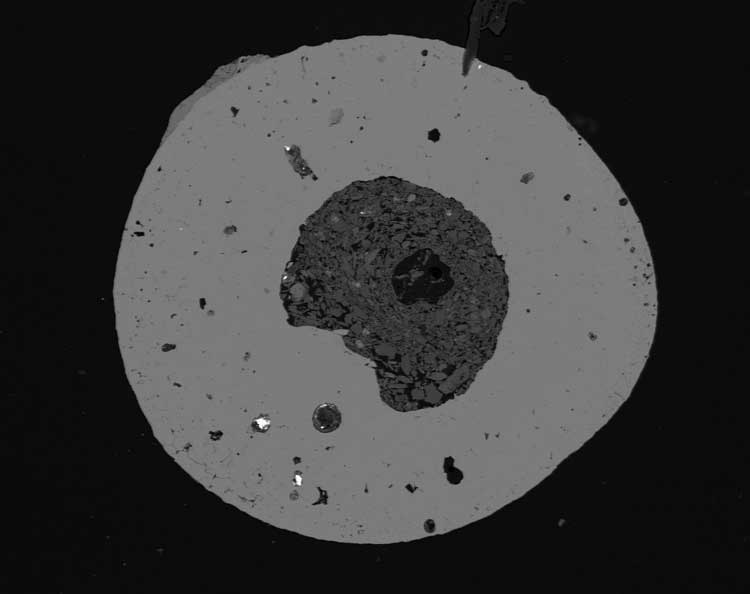
French winery is site of a meteorite crater
Domaine du Météore in southern France is a winery named for a peculiarity in the local landscape. The vineyards lie within a 650-foot-wide (200-meter-wide) depression and in the surrounding foothills. People in the area long believed the unusual feature was the result of a meteorite impact. And – in February 2023 – scientists said they’ve now confirmed people’s suspicions.
The researchers said their rock and soil analyses of the site shows it’s true: an iron-nickel meteorite did crash to Earth here, thousands of years ago.
Previously, scientists knew only three meteorite impacts in western Europe. This new discovery brings the total to four.
Geologist and cosmochemist Frank Brenker of Goethe University Frankfurt led the study. He’ll present his findings at the 54th Lunar and Planetary Science Conference in mid-March 2023.
In the meantime, the Earth Impact Database – which lists all 190 known craters that resulted from meteorite impacts – will add a new meteorite crater to its ranks.
Vacationing at a meteorite crater
Scientists know that – like the moon and other planets in our solar system – space rocks bombarded Earth frequently in the early days of our solar system, billions of years ago. But, on Earth, traces of those ancient impacts remain elusive today. Wind and water help wipe them away. And land erosion and plate tectonics also do a good job of removing evidence of impacts.
Some scientists proposed the idea that the Domaine du Météore region in the south of France was the site of a meteorite crater in the 1950s. But two observations caused scientists to toss that idea aside. First, the crater doesn’t have an elevated rim. And, second, scientists couldn’t find evidence of a magnetic anomaly, as is typically seen following the shock of a meteorite impact.
So the study of the Domaine du Météore region ended, until Brenker took it on. Brenker said:
Craters can form in many ways, and meteorite craters are indeed very rare. However, I found the various other interpretations of how this depression could have formed unconvincing from a geological perspective.
Brenker was on vacation when the Domaine du Météore caught his attention. While there, he and his wife collected rock samples for later analysis in the labs at Goethe University Frankfurt. And preliminary findings did indicate the meteorite strike was likely. As Brenker explained:
The microanalysis showed that dark-colored layers in one of the shists – which usually simply comprise a larger percentage of mica – might be shock veins produced by the grinding and fracturing of the rock. Those, in turn could have been caused by an impact.
In addition, their samples showed evidence of breccia. Breccia is rock made of broken, fragmented debris cemented together in events such as meteorite impacts.
That’s when Brenker decided to assemble a team, to follow up with detailed field work.

Brenker returns to Domaine du Météore
The following year, Brenker took his colleague Andreas Junge at Goethe University Frankfurt, and a group of students, with him to southern France to examine the crater in detail. In their studies, they found that Earth’s magnetic field is slightly weaker in the crater than in the surrounding region. This was the magnetic anomaly researchers had missed 70 years earlier. Scientists expect this kind of magnetic anomaly in impact craters. It happens when an impact shatters or melts rock, which then contributes less to the local magnetic field.
In another experiment, the team used strong magnets to attract tiny iron oxide spherules just one millimeter (about 1/25 of an inch) in diameter. Back at the lab, they found that the spherules contained nickel-bearing iron and a core of minerals, both typical of an impact site.
Lastly, the team found numerous shock microdiamonds. These itty-bitty diamonds form under high pressure during impact. Brenker explained:
Such microspheres form either through abrasion of the meteorite in the atmosphere or only upon impact, when a large part of the iron meteorite melts and then reacts with the oxygen in the air.
On impact, material shattered at the point of impact might then also be encased. This, together with the lower magnetic field and the other geological and mineralogical finds, allows us to draw hardly any other conclusion: a meteorite did indeed strike here.
He added:
Every visitor can experience here the immense energies released upon such an impact.

Bottom line: Scientists have confirmed that Domaine du Météore, a French winery named for a depression in the landscape, is indeed the site of a meteorite impact.
Read more about the meteor crater from Domaine du Météore
Via Goethe University Frankfurt
Read more: The 5 impact craters on Earth that highlight our wild past











